Iguazu National Park, a UNESCO World Heritage Site, straddles the border between Argentina and Brazil and is home to one of the most spectacular natural wonders in the world – the Iguazu Falls. Encompassing lush subtropical rainforest, the park boasts incredible biodiversity, with over 2,000 plant species, 400 bird species, and numerous mammals, including jaguars and tapirs. Iguazu National Park offers extensive walking trails, boat rides, and wildlife observation opportunities, making it a paradise for nature lovers and adventure seekers. A harmonious blend of ecological richness and natural beauty, this park is a must-visit destination for those seeking awe-inspiring experiences.
Iguazu National Park Location
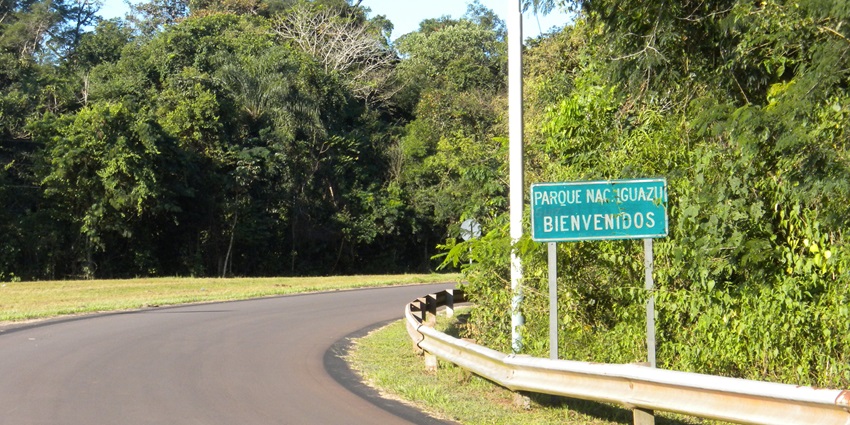
Photo: Horacio Cambeiro / Wikimedia Commons / Image For Representation Only
Iguazu National Park is located in the northeastern region of Argentina, in the province of Misiones, and extends across the border into Brazil’s Paraná State. It lies near the confluence of the Iguazu and Paraná Rivers, marking the tri-border area where Argentina, Brazil, and Paraguay meet. The park is easily accessible from the nearby cities of Puerto Iguazú in Argentina and Foz do Iguaçu in Brazil.
Suggested Read: Top Places In Argentina
How To Reach Iguazu National Park
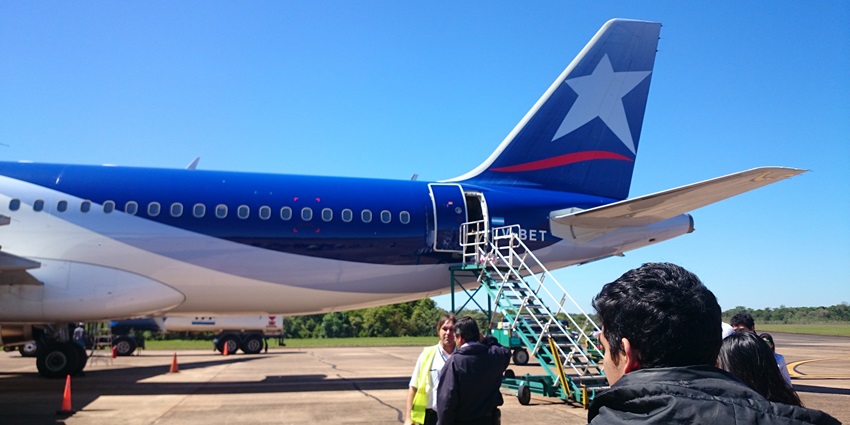
Photo: Horacio Cambeiro / Wikimedia Commons / Image For Representation Only
By Air: Fly to Cataratas del Iguazú International Airport (Argentina) or Foz do Iguaçu International Airport (Brazil). Both airports are well-connected to major cities like Buenos Aires, Rio de Janeiro, and São Paulo.
By Bus: Long-distance buses run from Buenos Aires (Argentina) or major Brazilian cities to Puerto Iguazú or Foz do Iguaçu. The journey takes approximately 16-20 hours from Buenos Aires.
By Car: Drive to Puerto Iguazú (Argentina) or Foz do Iguaçu (Brazil) via well-marked highways.
Places To Visit In And Around Iguazu National Park
Iguazu National Park is renowned for its iconic Iguazu Falls, offering awe-inspiring views, jungle trails, and wildlife encounters. Nearby attractions include the Itaipu Dam, a marvel of engineering, and the vibrant bird park, Parque das Aves.
1. Devil’s Throat
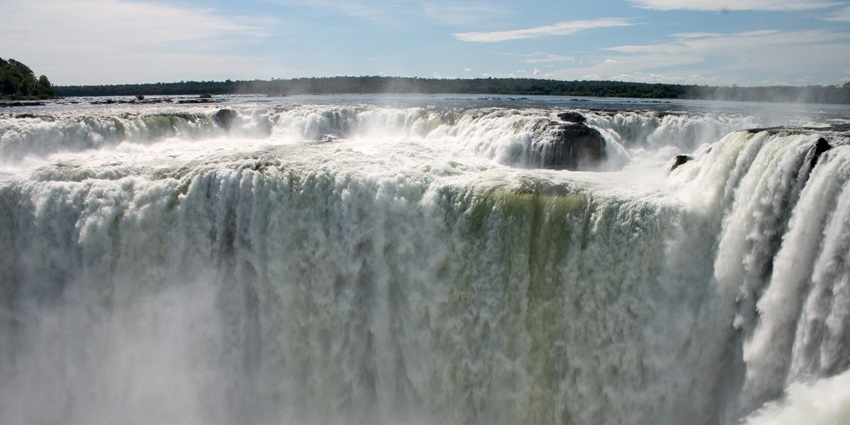
Photo: Luca Galuzzi / Wikimedia Commons
Devil’s Throat is the most awe-inspiring feature of Iguazu National Park, a U-shaped waterfall plunging 80 meters into the Iguazu River below. This massive cascade, shared between Argentina and Brazil, produces an incredible roar and a constant mist where rainbows frequently appear. A walkway leads visitors to a viewing platform near the falls, offering an up-close experience of the powerful cascade. The sheer scale and force of the water make it one of the most breathtaking sights in the world, attracting nature lovers and photographers alike.
Timings: 8 AM – 6 PM
Major Attraction: A dramatic viewing platform at the edge of the roaring waterfall
Suggested Read: Things To Do In Brazil
2. Bird Park
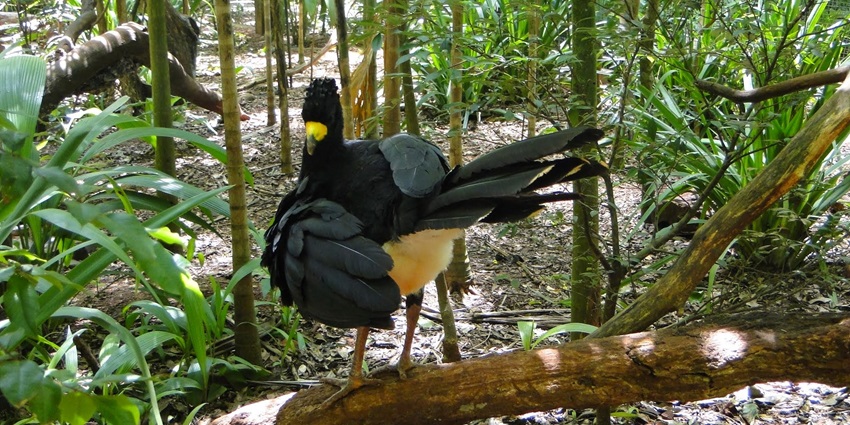
Photo: Leon petrosyan / Wikimedia Commons / Image For Representation Only
Bird Park, situated near the Brazilian side of Iguazu Falls, is a haven for bird lovers and nature enthusiasts. Spanning 16 hectares, it houses over 1,300 birds representing 150 species, including toucans, macaws, and flamingos. Walk-through aviaries allow visitors to interact closely with exotic birds in their natural habitats. The park also showcases butterflies, reptiles, and native plants, emphasizing biodiversity conservation. Educational displays and photo opportunities make it a favorite spot for families and wildlife enthusiasts.
Timings: 8:30 AM – 5:30 PM
Major Attraction: Immersive walk-through aviaries with free-flying tropical birds
3. Itaipu Dam
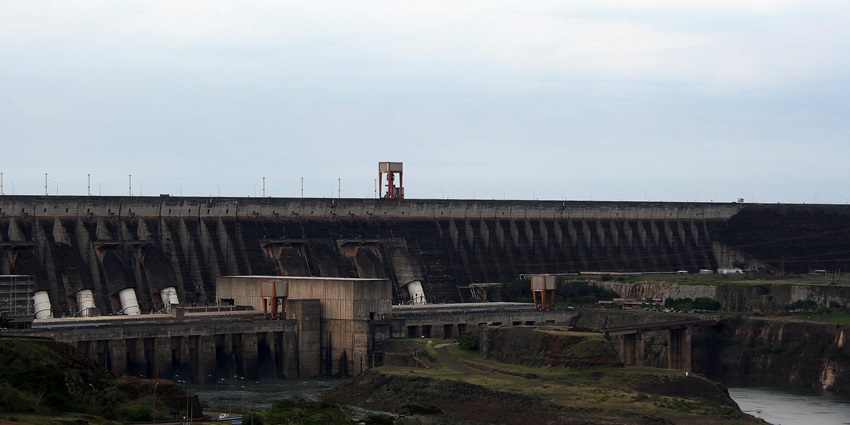
Photo: Cmasi / Wikimedia Commons
Straddling the Paraná River between Brazil and Paraguay, Itaipu Dam is one of the world’s largest hydroelectric projects, generating renewable energy for millions. Visitors can join guided tours to learn about its construction and operation, marveling at the sheer scale of this engineering feat. The Panoramic Tour offers sweeping views of the dam and its surroundings, while the Technical Tour provides insights into its intricate mechanisms. At night, a captivating light and sound show illuminates the dam, turning it into a spectacle of technology and beauty.
Timings: 8 AM – 5 PM
Major Attraction: Evening light show highlighting the dam’s architectural grandeur
Suggested Read: Things To Do In Argentina
4. Hito Tres Fronteras
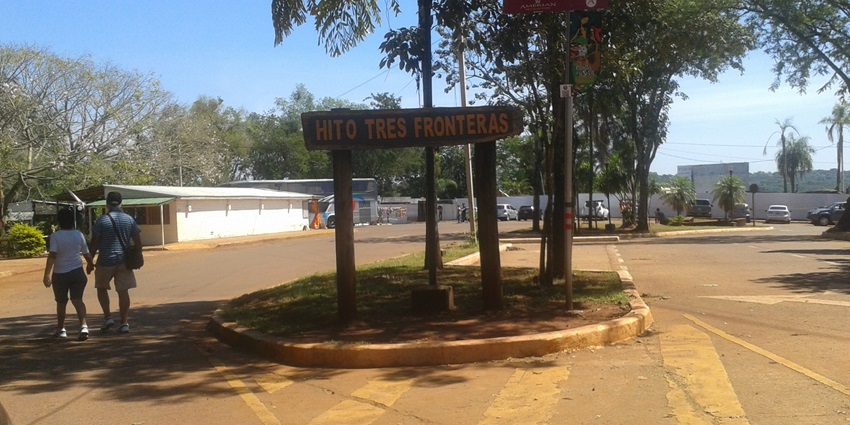
Photo: Horacio Cambeiro / Wikimedia Commons
Hito Tres Fronteras, located in Puerto Iguazú, marks the unique meeting point of three nations: Argentina, Brazil, and Paraguay. This cultural and historical landmark features colorful obelisks representing each country and offers stunning views of the Iguazu and Paraná Rivers converging. The site is wonderful at sunset, with golden hues reflecting on the water. A vibrant light and water show adds a magical touch to the experience in the evening. Visitors can also explore craft stalls and enjoy local snacks, making it an excellent spot for families and travelers.
Timings: 24*7
Major Attraction: Sunset views and evening light shows highlight the tri-border beauty
5. San Ignacio Miní Ruins
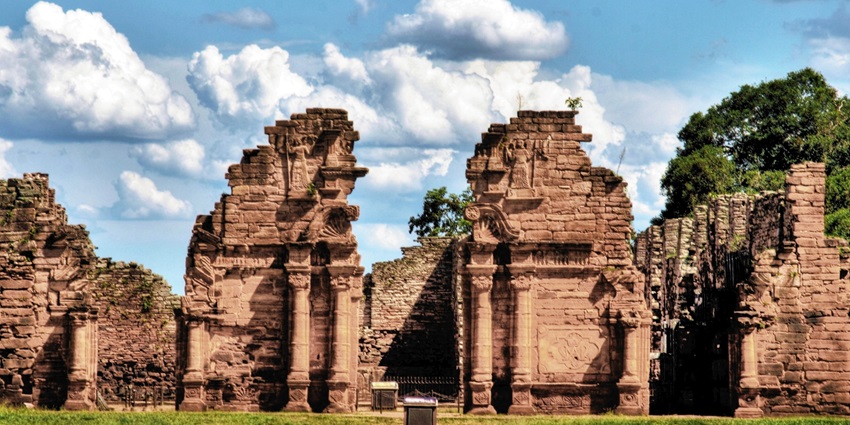
Photo: Hic et nunc / Wikimedia Commons
Located a few hours from Iguazu, San Ignacio Miní is a UNESCO World Heritage Site showcasing the ruins of a 17th-century Jesuit mission. The site features stone remnants of the church, living quarters, and communal areas, reflecting the architectural ingenuity of the Jesuits and their influence on the Guaraní people. Guided tours provide historical insights into the mission’s cultural significance. At night, a captivating light and sound show narrates the story of the mission, offering a unique way to experience the ruins. This destination combines history, culture, and stunning architecture, making it a must-visit for history enthusiasts.
Timings: 7 AM – 6 PM
Major Attraction: Night light and sound show narrating the Jesuit mission’s history
Suggested Read: Best Places To Visit In Brazil For An Unforgettable Experience
Where To Stay
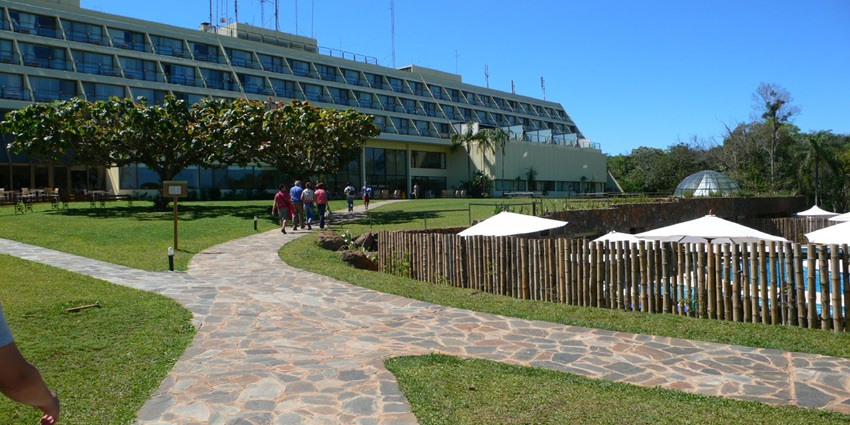
Photo: Philip Choi / Wikimedia Commons / Image For Representation Only
Iguazu National Park offers a range of accommodations to suit different preferences and budgets, primarily in Puerto Iguazú (Argentina) and Foz do Iguaçu (Brazil). For a luxury stay, hotels like Gran Meliá Iguazú, located inside the park on the Argentine side, provide breathtaking views of the falls and top-tier amenities. Mid-range options such as Hotel Saint George in Puerto Iguazú offer comfortable stays with excellent facilities and proximity to local attractions. Budget travelers can opt for hostels like Tetris Container Hostel, offering affordability and unique experiences. On the Brazilian side, Belmond Hotel das Cataratas is a premier choice with its prime location inside the park.
Where To Eat

Photo: Robertaleotta2020 / Wikimedia Commons / Image For Representation Only
Iguazu’s surrounding towns, Puerto Iguazú (Argentina) and Foz do Iguaçu (Brazil), offer diverse dining experiences to suit every palate. For a taste of Argentina, visit La Rueda 1975, renowned for its traditional Asado (barbecue) and fresh local fish like surubí. Aqva Restaurante is another favorite, offering a fusion of regional and international flavors in an elegant setting. On the Brazilian side, Rafain Churrascaria Show combines all-you-can-eat Brazilian barbecue with lively cultural performances. For casual dining, El Quincho del Tío Querido in Puerto Iguazú serves hearty meals with live music in the evenings.
Suggested Read: Beaches In Argentina
Best Time To Visit
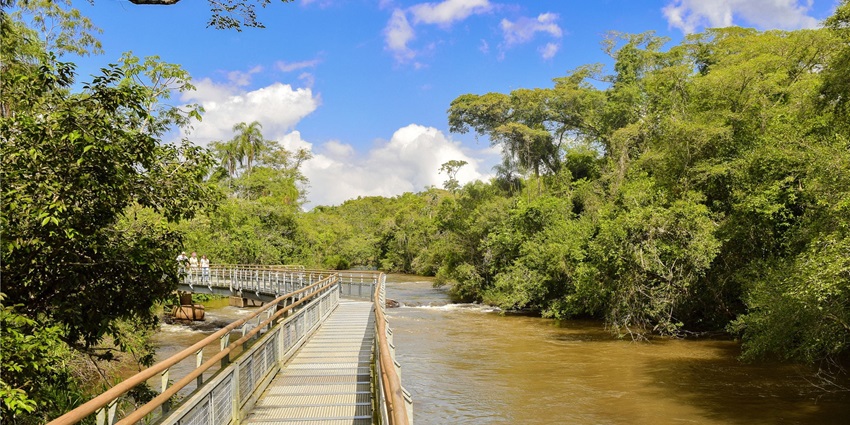
Photo: Rodrigo.Argenton / Wikimedia Commons
The best time to visit Iguazu National Park is during the shoulder seasons, between March and May, and September to November. These months offer pleasant weather, with moderate temperatures and lower humidity, making it ideal for exploring the park’s trails and enjoying the waterfalls. The crowds are also fewer compared to peak months (December to February), allowing for a more peaceful experience. While the falls are spectacular year-round, visiting during the shoulder seasons provides clearer views and better opportunities for photography
Other Factors To Consider
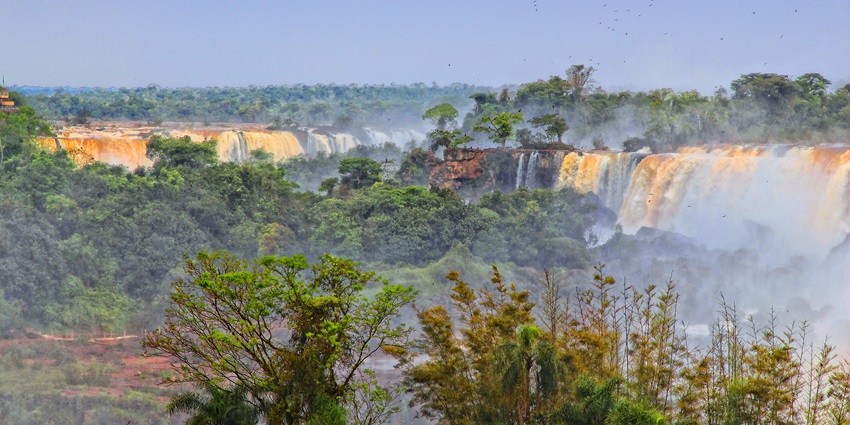
Photo: Marek Slusarczyk / Wikimedia Commons
Weather: The region has a tropical climate. Summers (December to February) can be hot and humid, while winters (June to August) are cooler but still pleasant for outdoor activities.
Crowds: Expect large crowds during peak tourist season (December to February) and holidays. For a quieter experience, visit during the shoulder seasons (March-May and September-November).
Accessibility: Consider transportation options. There are two airports (one in Argentina and one in Brazil) with easy access to the park. You may need a visa to cross borders, depending on your nationality.
Duration: Plan at least 2-3 days to fully explore the park and nearby attractions like Itaipu Dam or Bird Park.
Currency: Argentina uses the Argentine peso, while Brazil uses the Brazilian real. Ensure you have local currency or access to ATMs.
Suggested Read: Discover The Awe-Inspiring Cascading Brazil Waterfalls
Cover Photo: Horacio Cambeiro / Wikimedia Commons / Image For Representation Only


 WhatsApp
WhatsApp
 Twitter
Twitter









